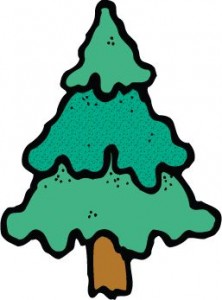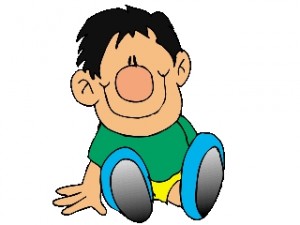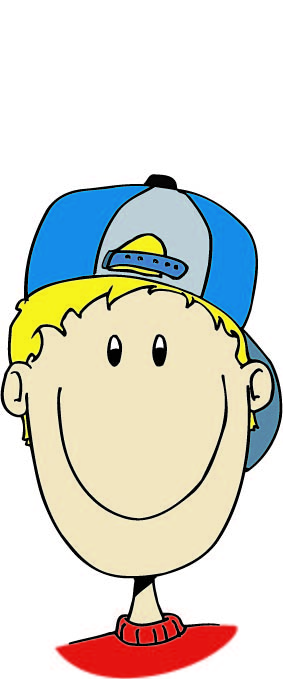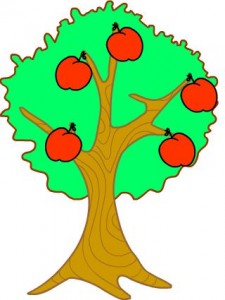A Happy New Year to everyone. The good news is that the blogs will resume tomorrow as we near our 500 post
milestone.
Maths help for parents of children aged 5 to 11
A Happy New Year to everyone. The good news is that the blogs will resume tomorrow as we near our 500 post
milestone.
 Well, Christmas is nearly upon us so I am going to have a few days break and just leave you with a tricky little Christmas maths puzzle. I will be back with loads more worksheets and maths ideas in the new year.
Well, Christmas is nearly upon us so I am going to have a few days break and just leave you with a tricky little Christmas maths puzzle. I will be back with loads more worksheets and maths ideas in the new year.
This puzzle looks quite easy but can cause a lot of problems. Probably suitable for older children, or even mums and dads! It asks to put the digits 1 to 9 in stars around a Christmas tree so that each side of four stars adds up to the same total.
There are a number of solutions, the one shown just an example.
 Another of the harder tables, this time the 7 times table. Many people think this is the hardest of all as there is very little pattern to it and the answers cannot easily be worked out from knowledge of other tables.
Another of the harder tables, this time the 7 times table. Many people think this is the hardest of all as there is very little pattern to it and the answers cannot easily be worked out from knowledge of other tables.
Once again there is nothing especially ‘catchy’ to remember about this table, it is pretty much just hard work. It should not be learned until the 2, 3, 4, 5 and 10 times tables have been learned. If this has been achieved, then over half the 7 times table has already been mastered!
The whole idea of tables is that they are learned, off by heart. To do this it is essential to say them out loud:
One times seven is seven
two times seven is fourteen
three times seven is twenty one
four times seven is twenty eight
five times seven is thirty five
six times seven is forty two
seven times seven is forty nine
eight times seven is fifty six
nine times seven is sixty three
ten times seven is seventy
Below are two worksheets for the seven times table. A good way to do these is to time them to see how long your child takes.
When you get really good with a table you should be able to say it in under ten seconds (missing out unnecessary words ie one seven, seven; two sevens, fourteen…etc).
Now we come to some of the harder tables, starting with the 6 times table.
There is nothing especially ‘catchy’ to remember about this table, it is pretty much just hard work. It should not be learned until the 2, 3, 4, 5 and 10 times tables have been learned. If this has been achieved, then over half the 6 times table has already been mastered!
Someone with a good knowledge of the three times table can always double the answers to get the six! Also six sixes is thirty six has a nice rhythm to it. Continue reading “Learning tables: 6 times table”
Maths worksheet on recognising squares from mathsblog.co.uk
Here is a straightforward maths worksheet on recognising squares. Remember that the square is a special sort of quadrilateral, with all four sides the same length and all four angles are right angles. We normally see squares represented with the sides horizontal and vertical, but it is harder to spot a square when it is tilted, giving it more of a diamond appearance – don’t be fooled as it could well be a square slightly rotated. Very young children may see this as a different shape which brings up the notion that the shape stays the same even if it is rotated.
At this stage, work with shape should be mainly practical using real shapes. Schools will normally be stocked with plastic or similar shapes, both 2-D and 3-D, but parents can quickly and easily make a collection of the most common shapes from empty tins and packets (including those boxes from a popular triangular chocolate bar), and cut 2-D shapes from card.
2-D and 3-D shapes are all around us. Use opportunities to discuss shapes as you come across them in everyday life (clocks, bath plugs, holes in the road, fencing posts, CDs etc).
 Good news! Schoolchildren in England are doing rather better at maths than you might think! The Trends in International Mathematics and Science Study (Timss) has just issued a report which states that our 10 year olds are among the best performers in the world.
Good news! Schoolchildren in England are doing rather better at maths than you might think! The Trends in International Mathematics and Science Study (Timss) has just issued a report which states that our 10 year olds are among the best performers in the world.
The best results are achieved by the Pacific rim countries such as Singapore, Hong Kong and Japan, but England outplays the USA, Germany and all other European countries apart from Russia. Continue reading “News: children doing better at maths!”
The Primary School Curriculum has once again come under review, this time by Sir Jim Rose. He suggests a more flexible curriculum organised into ‘areas of learning’ rather than individual lessons. He suggests six areas:
English, communication and languages
Mathematics
Science and technology
Human, social and environmental
Physical health and well being
Art and design
Of course the arguments for and against have already started, but for once this seems like a pretty good compromise between the over structured subject based timetable currently taught as a result of the National Curriculum and the 1960’s topic based approach to learning.
Good luck to them.
 Subtracting from multiples of 10 in your head by mathsblog.co.uk
Subtracting from multiples of 10 in your head by mathsblog.co.uk
Subtracting a 2 digit number from a multiple of 10 can be done ‘in your head’, but it does need care and using an efficient method.
Let’s look at:
50 – 27
Probably the easiest way to do this is by ‘counting on’.
Step 1: Count on from 27 to the next whole ten (30), which is 3. Hold the three in your head for later.
Step 2: Count on in tens from 30 to 50, which is 20.
Step 3: Add the 20 to the 3 which is 23.
50 – 27 = 23.
(You will often find that children give the answer as 33 rather than 23. That is usually because they have counted on from 20 to 50 which is 30 and then added another 3 to get 33, ignoring the adjustment of the tens.)
Free maths worksheets below:
 Another maths worksheet from mathsblog.co.uk which shows the ‘standard’ method for subtraction. It is an excellent practice page at getting used to the method as it only deals with 2-digit numbers. Two points need to be made:
Another maths worksheet from mathsblog.co.uk which shows the ‘standard’ method for subtraction. It is an excellent practice page at getting used to the method as it only deals with 2-digit numbers. Two points need to be made:
1. It is normally expected that 2-digit subtraction should be done ‘in your head’ and this page is only a beginning to learn the method for harder 3-digit, decimal etc. subtraction later.
2. All the questions here require ‘decomposition’ and there is a danger that a child comes to think that they always have to ‘decompose’ even when it is not necessary.
 Number rhymes are vitally important for the early development of number and maths skills. There are many of them but the best tend to have a repetitive theme – we all know the horrendous ‘ten green bottles’.
Number rhymes are vitally important for the early development of number and maths skills. There are many of them but the best tend to have a repetitive theme – we all know the horrendous ‘ten green bottles’.
‘The Farmer’s Apple Tree’ is a good number rhyme for young children which can be read aloud. It helps with counting down from 5.
I am not sure of the origin of it but it appears in many different forms. This version comes from a forthcoming set from urbrainy.com and includes extra pages to colour and write numbers from 1 to 5.